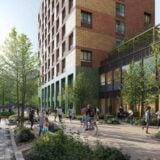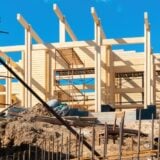Property price growth in key UK cities is moderating, ranging from a rise of 7.5% to a fall of 4% and up overall year on year by 4.2%, the latest index shows.
Top growth is in Nottingham where prices have grown by 7.5% in the 12 months to July 2018, followed by a rise of 6.6% in Leicester, 6.3% in Liverpool, 6.1% in Manchester and 5.7% in Birmingham.
The data from the Hometrack cities index also shows that prices fell year on year by 4% in Aberdeen, by 0.1% in London. However prices are still up quarter on quarter in London by 1.2% and the report says the market is seeing small month on month gains.
It also looks at where prices are 10 years on from the financial crisis and performance has varied widely. Indeed, three cities have prices below the levels a decade ago while four cities have prices more than 50% higher than in 2008.
Prices in Belfast, Liverpool and Aberdeen are below the level they were in July 2008, during the height of the financial crisis, while Newcastle and Edinburgh have experienced weak single digit growth.
By contrast, house prices in Cambridge are 70% higher than in 2008 followed by London at 65%, Oxford 55% and Bristol 53%. The firm says that stronger economic growth, a broader base of demand for housing and limited availability of homes for sale are behind this stronger performance. However, it also points out that these cities are now registering some of the weakest levels of growth as a result of low yields and stretched affordability.
The firm does not create 10 year forecasts but looking at how housing cycles have unfolded in the past it does expect the underperforming cities to have closed much of the gap to the top performers in terms of percentage price change from 2008.
‘The timing and scale of this process will rely on economic growth and job creation in these cities and the trajectory of mortgage rates. Average prices in the highest value cities are set to remain, at best, largely static for the foreseeable future as affordability pressures unwind through a drawn-out period of low real house price falls and underlying growth in household incomes,’ it adds.






